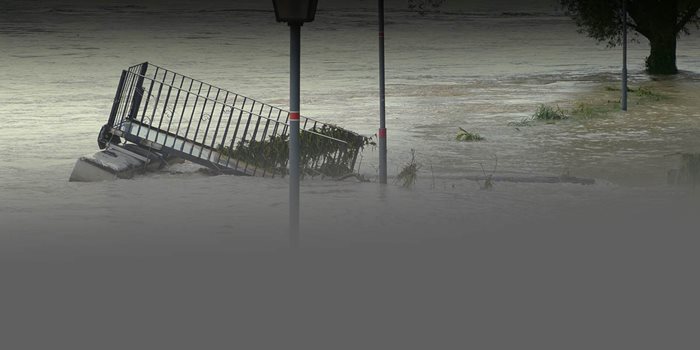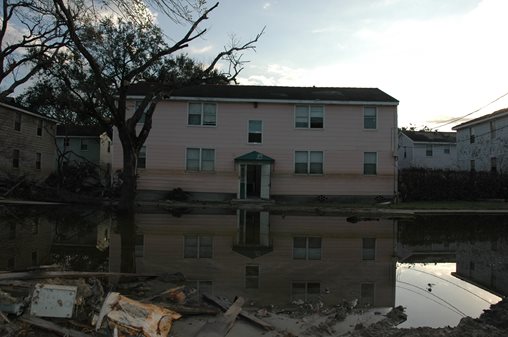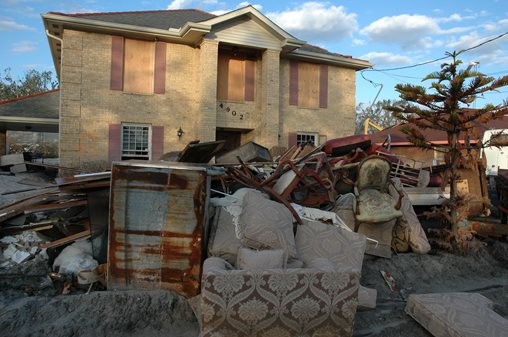
Hurricane season is here once again—extending from June through November. Flooding often causes as much damage as the hurricane itself—and that’s a risk faced by many areas of the country as the climate evolves and shifts. Even areas not typically prone to heavy rains are being hit these days, making floods the most common natural disaster in the United States. In fact, more than 20 percent of flood claims come from properties outside high-risk flood zones.
That means it’s a good time—if it’s not too late already—for nonprofits to assess their disaster preparedness and response skills.
“In the last year, there have been about 40 federally declared disasters, 20,000 state disasters and more than 40,000 local,” Greg Forrester, president of the National Voluntary Organizations Active in Disaster (NVOAD) told a recent meeting of NeighborWorks leaders. “Consider that there is a house fire every 8 minutes. Yet, once kids get out of elementary school, most families don’t have a response plan anymore. And we’ve seen—particularly in poverty or near-poverty areas—this means they are less likely to survive.”
The keys, he said, are “preparation, response, long-term recovery and mitigation/prevention.” All of these steps can be helped significantly by local governments and nonprofits like NeighborWorks members. He also noted, “You can’t over-communicate. You need to find out who offers what [related to disasters] and bring them to the table.”
Those pointers may seem obvious and simple, but community development professionals like Kathy Payton, president of Houston’s Fifth Ward Community Redevelopment Corp., have found out “under fire” how complex they can be.
 “We focus on the 4 Cs,” she said at the forum. “But when we were hit by Hurricane Harvey, we discovered we had limited preparedness. We had lots of water and food on hand, but we found out we were too ‘cookie cutter’ in our approach. We didn’t assess and plan for the differing impact on and needs of marginalized residents. Social media quickly became our best friend; we used it to identify addresses of families on roofs, in attics and all sorts of havens away from home. We also learned we need to do more advocacy. So many of our residents didn’t have flood insurance because they simply couldn’t afford it.”
“We focus on the 4 Cs,” she said at the forum. “But when we were hit by Hurricane Harvey, we discovered we had limited preparedness. We had lots of water and food on hand, but we found out we were too ‘cookie cutter’ in our approach. We didn’t assess and plan for the differing impact on and needs of marginalized residents. Social media quickly became our best friend; we used it to identify addresses of families on roofs, in attics and all sorts of havens away from home. We also learned we need to do more advocacy. So many of our residents didn’t have flood insurance because they simply couldn’t afford it.”
A recent Politico investigation found that many low-income families in one Houston community, Kashmere Gardens, were denied FEMA relief funding because much of the land was in a flood zone and homeowners were required to have insurance—a stipulation about which most residents were ignorant.
Loss of power multiplies impact
At least the Fifth Ward offices never lost power. Terri North, founder of Providence Community Housing in New Orleans, notes: “You can’t really prepare for having no power for one to two weeks.” Providence was formed following Hurricane Katrina to promote equitable long-term recovery, but at her previous position, that was the reality employees faced. NVOAD sent in volunteers to help deliver food and ice, since even nonprofit staff members were impacted.There is probably no more dramatic example of what it means to go without power for days and weeks than post-Hurricane Maria Puerto Rico.
“In Puerto Rico, the local government owned the electrical system and no real maintenance had been done in a decade,” observed Forrester. “They also hadn’t cleared fallen trees and other debris for 12 years. When the storm took out all of the electrical poles, our modern addiction to the cost savings of just-in-time inventory caught up with them. There weren’t enough poles, wire and insulators to repair the system. And the ports were so full of shipping containers of donated clothes and other things that electrical supplies couldn’t get in!”
Don't forget to care for first-responders
 Everyone in Puerto Rico was impacted—even the first responders. Payton agreed that organizations often forget to pay attention to their own employees: “Teams often focus on everyone else, when their own members are impaired. I had staff delivering water when they didn’t have it at home themselves!”
Everyone in Puerto Rico was impacted—even the first responders. Payton agreed that organizations often forget to pay attention to their own employees: “Teams often focus on everyone else, when their own members are impaired. I had staff delivering water when they didn’t have it at home themselves!”North suggested preparing in advance to be able to activate a call-in line for employees and residents, allow direct (bank) deposit of paychecks and access shared files via cloud backup.
Felix Torres-Colon, executive director of Philadelphia’s New Kensington Community Development Corp., suggested that organizations don’t limit their attention to physical needs, but also the long-term effects of trauma.
“When your physical or social well-being is threatened, the effects can range from a loss of trust in the institutions on which you have to rely, a diffuse sense of helplessness and even terror, and cognitive difficulties, such as a loss of concentration,” said Torres-Colon, whose organization uses a special curriculum to train block captains to recognize and deal with the impact of trauma. “Physical consequences such as obesity and chronic illnesses can occur as well. It’s important to help them talk about and deal with it upfront.”
North notes that’s why it’s important to try to rescue pets as well. “The elderly in particular are attached to their pets; in traumatic situations, pets can be incredibly therapeutic. Don’t trivialize them.”
Forrester agrees: “I’d send chaplains into shelters right away; don’t wait until later. If you don’t engage in the beginning, the consequences will be much worse later—including suicide and child abuse. Line these resources up in advance.”
Today, many communities have learned from these disasters. The cities of Boston and New Orleans now have resiliency plans, and so does the state of Massachusetts. In fact, North noted, New Orleans has a “chief resiliency officer.”
“A disaster is a horrible thing to waste,” noted Forrester, encouraging nonprofits to connect to their local NVOAD member. “It’s an opportunity to learn.”

